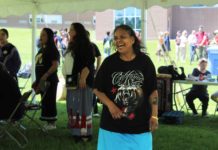How much space do we need? On a campus of over 30,000 students, staff, and faculty, the question of how much space is enough for everyone doesn’t come with a simple answer.
A study conducted by the Council of Ontario Universities (COU) rates the University of Waterloo significantly behind other Ontario schools in terms of space. UW is used to topping lists and ranking high when it comes to quality of education and success of graduates, but we fall short on overall student life, space included.
In the recent Feds elections, space was a hot topic. Every team seemed to have their own solutions, whether it was claiming space in the newly purchased Blackberry buildings or clearing books out of Dana Porter to make room for study space.
No one is denying that students need more space. Everyone from Feds to the soon-to-be former Vice President, Academic and Provost Geoff McBoyle agrees that space is an issue on campus.
“The bigger issue to my mind is the social space. We have decreased the social space over the last 15 years or so and it’s time to reconsider that,” said McBoyle in an interview this March.
McBoyle cited current initiatives like the new student residence and updates to UW Place as solutions to part of the problem, as well as efforts like adding desks into the hallways of the IQC and working with the libraries to maximize space as the administrations fix study areas.
“Hopefully as we move into the BlackBerry buildings, through a domino effect, some space should come available,” he said, touching on a common debate theme during the Feds elections. Several candidates said the recently acquired buildings could be students’ answer to the space crunch. However, McBoyle confirmed that once minor renovations are complete, space will be used for offices.
“Social space is an issue that we have to look at because in many ways social space is not something you can put in one building, it has to be located in all the buildings, and that’s a challenge,” said McBoyle, repeatedly adding that the university is aware of the problem.
Part of the solution to social space is deciding who is responsible for it, who should lobby for it, who should pay for it, and who should plan it. Former Feds president Andrew Noble began an initiative during his campaign to create a new student building. The project was the primary aspect of his campaign, which got him elected.
“I was for that, I ran a campaign on that, I was elected to build a new student building,” said Noble.
Some students may remember the countless consultation events and updates from Feds in the spring term of 2012. There were individual focus groups, town halls, and an unconference held to inform students about the project and figure out what the student body wanted to see in the new space.
The student consultation confirmed what the administration says now: UW needs more social space.
The new student building project hasn’t completely died, however; it has essentially been on hold since Noble left office one year ago.
The building was not an “organization priority” for Feds in the last year, and the administration was aware of that, said Jesse McGinnis, former Feds board member and presidential candidate in an interview last winter. He added that a lack of pressure and lobbying from the student body also contributed.
“Effectively where it’s at now, if students want the building to happen … there needs to be either strong organizational support from Feds’ side, or there needs to be a strong push by students and it needs to be shown that it’s a priority,” said McGinnis.
Noble had intended to have the project go to a student referendum before the end of his term as president, which would have gotten the ball rolling on planning and construction once he had left office. However, when he started his tenure, he inherited the Fed Hall negotiations and SLC management agreement from the previous exec. Those projects took up most of his time and by the end of his term, a referendum was out of the question.
“We talked about doing a March [2012] referendum. But things take time in the university. I did not want to go to referendum without an agreement in place with the university. I did not want to commit student money to a question mark,” said Noble.
Noble passed the project on to the incoming president David Collins, who did not prioritize it.
“We didn’t run on it,” said former president David Collins. “We didn’t prioritize it as an executive team.”
Collins added that the university did not approach Feds during his tenure to move forward with the project therefore he saw no motivation to continue the plans.
“I can’t make a concrete decision on where I’m planning to take [the project],” said Danielle Burt, current Feds president.
Burt said that she has spoken to Noble about the project and plans to meet with Chris Read, the associate provost, and students early on in her presidency to explore the possibility of the building.
“I definitely want to have those conversations with the university because if it’s a potential and it’s not outrageous for students to pay for, then it’s definitely something to look into,” said Burt.
This leaves the future of the project unclear. The team of councillors that Noble put together to research the possibility of a new building and consult students did extensive amounts of work that could very well still be used in future building proposals.
Essentially, it is up to students to lobby Feds and the university administration for what they want in terms of space. The discussion is, after all, about benefitting students.
During their tenure, the past year’s exec conducted a space audit of the SLC as their primary student space initiative.
Natasha Pozega, former vice president of operations and finance led the project, conducting focus groups with students to find out what they wanted to see changed. Feds also measured square footage and took inventory of rooms and the literal space within the building.
With a new exec now in place, it will be up to them to use the data and results from the audit.
Whether the solution is a new building, an SLC renovation, or repurposing existing space, it is clear that if students want to see more social space on campus, they are going to have to speak up.
Pick up the May 30 edition of <em>Imprint</em> or visit uwimprint.ca to read the second instalment of this series and learn space issues from student societies’ perspectives.































